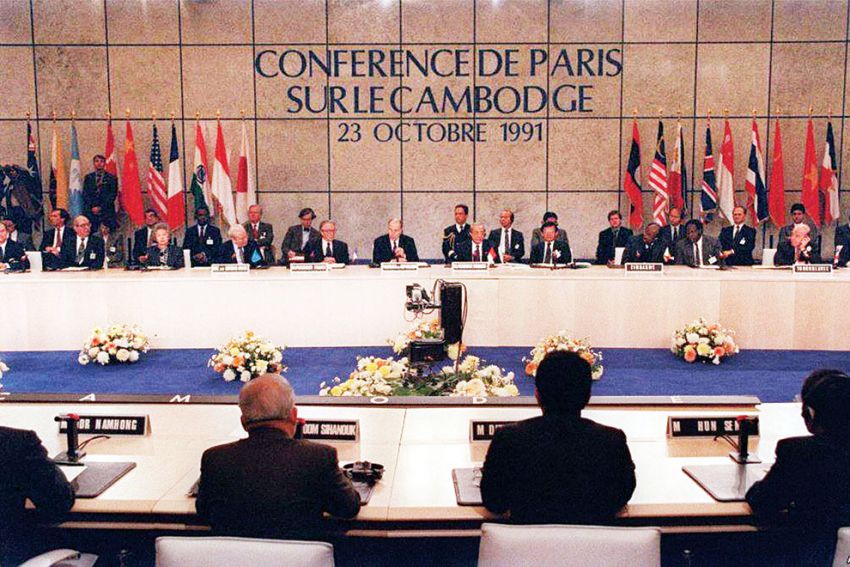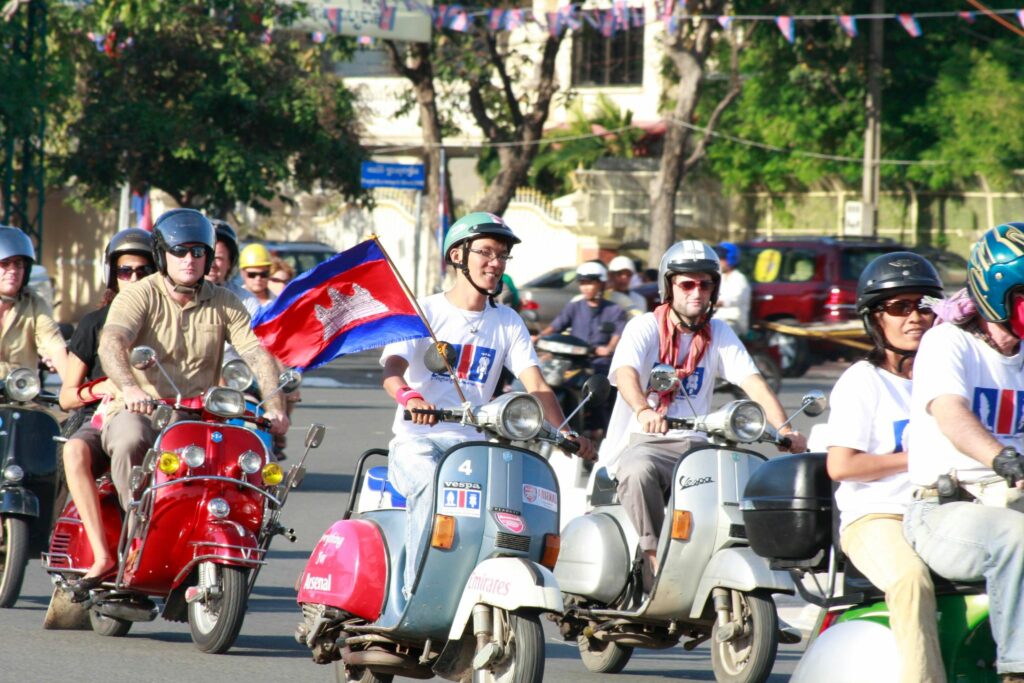Unofficial Translation from The Phnom Penh Post’s Khmer edition
TUESDAY, 26 JULY 2016,
TONG SOPRACH
កសាងសន្ដិភាពគ្មានការត្រួតពិនិត្យជាក់លាក់ ធ្វើឲ្យកម្ពុជា ជួបវិបត្តិដល់បច្ចុប្បន្ន

As Cambodia is approaching the General Election, the new young voters are showing great efforts in understanding political updates to make the right decision. On the other hand, the middle-aged voters seem bored and tired of the official voting since being of the impression that nothing will change before and after each election.
This peace process is resulted from the failure in peace-building in Cambodia when the four conflicting parties, namely the People’s Republic of Kampuchea, FUNCINPEC, KNPLF, and Khmer Rouge, signed the Paris Peace Agreement on 23 October, 1991, to end the atrocities in the country.
The agreement comprised of some terms and conditions bound to the signatories including cease fire, the repatriation of Cambodian Refugee residing along Thai border, the permission for United Nations Transitional Authority in Cambodia (UNTAC) to organize the first General Election in 1993 as well as to uphold the security to ensure political stability.
After the first General Election, Funcinpec obtained the majority of seats in the Assembly, implying that the prime minister would be appointed from the party. However, the Cambodian People’s Party (CPP) refused the election result and even threatened to separate the nation itself. The King Norodom Sihanouk (then Prince Norodom Sihanouk) took steps to settle the dispute, first by sacking and by accusing UNTAC officials, both military and civil to leave the Kingdom.
Afterwards, the King chose his own system a pair of premiers in creating the government, in which Prince Norodom Ranariddh from Funcinpec was the first prime minister and Hun Sen from CPP the second. During the drafting Constitution law process, it was set that the General Election was to be held every five years, yet it did not state the specific term length limit to the premier, apparently because each premier intended to stay longed for lasting power, although they knew that it was against the nature of democracy. So up until today, there is no term limit for a prime minister seating period in the law.
Yet the dispute between the two elected parties continued, eventually leading to the bloodshed battles/the coup d’Etat on 5th -6th July, 1997. At the time, there was no intervention from the U.N or any other international body, apparently due to Cambodia itself claimed that it could be responsible for its own destiny.
The peace and calmness following the Coup D´Etat lasted only a short time, as the chaos would return in the period around the General Elections. Chaos characterized by intimidation, violence, assassination, dismissal of election result, and political deadlocks.
Things are not different as this 6th General Election coming nearer and nearer in 2018. Political crises have started occurring, proved by the harassment of the members from the opposition officials (CNRP) by using the court system. So far, CNRP President Sam Rainsy remains in self-exile in France while the acting president Kem Sokha is hidden in the party’s headquarter in Phnom Penh from the police. Moreover, human right activists and a village chief from the opposition party have been arrested and detained.
The recent murder of Kem Ley, a political media commentator, has not only saddened the public but also woken them up to see the restriction on the freedom of speech in Cambodia. To make the matter worse, both parties are pointing finger to one another regarding Kem Ley’s death, someone would even say that they are exploiting it.
The political crisis amid the people living at the lowest level of development has been driving people out of the country to work in other countries. Thailand alone has approximately 700,000 illegal Cambodian migration workers (Central, 2016), and such amount is compared to number of Cambodian refugees before the Paris Peace Agreement in 1991. So what does “Peace” really mean?
The international communities, which have their ambassadors in Cambodia, could only “call for” the return of the use of dialogue between the two parties. Moreover, the UN Secretary-General Ban Ki-moon directly called Minister of Foreign Affairs HE Prak Sokhon to call for the end of harassment to human right officers.
Prime Minister Hun Sen dismissed the London-based organization of Global Witness out of Cambodia, threaten to do the same to Office Of The United Nation High Commissioner For Human Rights (OHCHR). “Khmer issue should be resolved by Khmer people, there´s no need for international support”, he usually claims.
Nevertheless, in the Cambodia-Thai dispute regarding Preah Vihear temple area in 2008, Cambodia government asked the UN to intervene in the issue, but the organization ignored it. The two parties worked with one another to settle the dispute, while Thailand insisted on bilateral meetings, given its advantageous situation.
At the same condition, the opposition party is seeking interventions from the international community, but it is also suffering firm resilience from the ruling party. The premier usually mocks the international community that threat to cut off aids, stating that “Cambodia does not care about it, we managed to survive on its own prior to the aids. Why can’t it now?”
The lessons learnt from the failure of internal dispute settlement and the “My-country, My-responsibility” argument have been compiled as a common theme to practice as role plays by international professors specialized in international conflict resolution and peace-building for the countries and mediators/peace-builders to study to find the key phrase to seek for sustainable peace process.
Today, these stakeholders are working and keeping their eyes on the actual peace process in East Timor, Aceh and Myanmar, drawing significant lessons for the sake of learning. Moreover, they often question what to do in a post conflict country.
Why is the peace process in Cambodia moving backwards? Although the UN spent both time and 2 billion dollars on Cambodia’s General Election in order to put an end to the Cambodia’s dispute, When UNTAC left Cambodia they kept the Land Cruiser cars for the royal government used; meanwhile, those cars were stolen out of the Kingdom.
Tong Soprach is a social-affairs columnist for the Post’s Khmer edition.
Comments: [email protected]
